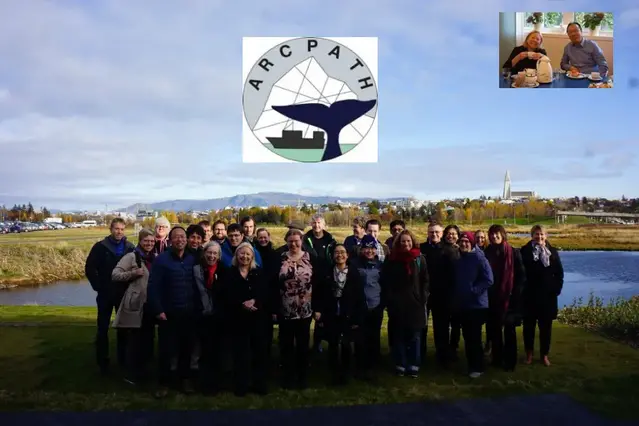On a pathway to resilient and sustainable societies
The research project ARCPATH (Arctic Climate Predictions: Pathways to Resilient, Sustainable Societies) has been completed after four years. The aim of the project has been to investigate pathways to resilient and sustainable societies by developing climate projections in the Arctic and to interpret the effects of climate change on local communities in Iceland, Greenland and northern Norway in connection with ongoing socio-economic changes. The project was funded by NordForsk.

The researchers that were involved in the project.
ARCPATH has been a Nordic collaboration between researchers from SMHI, Nansen Environmental and Remote Sensing Center, The University of Bergen, Norwegian institute for air research, Danish Meteorological Institute, University of Iceland and Stefansson Arctic Institute. The researchers in the interdisciplinary project have a background in climatology, environmental science and socio-economic science. The collaboration has led to synergy in the knowledge creation and perspectives that would not have been possible otherwise.
It was exciting to work together with researchers from other disciplines and put the effects of climate change in a larger context, says Torben Königk, PhD, Head of global climate modelling, SMHI.
The overarching goals of the ARCHPATH project have been
- To improve Arctic climate prediction by using more advanced methods to capture both anthropogenic and natural factors in global and high-resolution regional models;
- To increase understanding and reduce uncertainties regarding how changes in climate interact with multiple societal factors including the development of local and regional adaptation measures; and
- To supply this knowledge as potential “pathways to action” to the specific Arctic regions singled out for special focus in the project.
Why there?
The reason why the project focuses on areas in the north is that in high-latitude regions climate change is amplified through a number of different feedback mechanisms. Global warming leads to less sea ice, a moister atmosphere and higher sea and atmospheric temperatures, affecting both the ecosystem and human life. In order to adapt, more detailed information is required on a local scale than what has been developed so far with climate models as they have had relatively low resolution. The focus has been on gaining an understanding of the complex issues regarding climate and socio-economic change with a focus on the changes and challenges that take place in the short term. Also, to be able to contribute with solid policy relevant results for responsible and sustainable development.
What has been the role of SMHI?
SMHI have contributed with expert knowledge and performed climate simulations on both global (with the EC-Earth model) and regional scale (with the HCLIM and MITgcm models). Previous studies have shown that there is a relatively high potential for predictability in the Northern North Atlantic and Arctic (see previous news article) and that higher spatial resolution in climate models provides more detailed information e.g. about precipitation in the Arctic.
The focus was on developing techniques to improve climate projections in the short term (season to decade) primarily by improving how EC-Earth represents the observed state of sea ice and by using higher resolution in the model.
Results of the research
The research project has led to analyses of change on a local and global level. The project has also led to improved climate forecasts for the coming years through mentioned climate models, new initialization methods and high-resolution regional models. Through ARCPATH, SMHI also contributed climate predictions to the "Decadal Climate Prediction Project (DCPP)" project, which is part of CMIP (Coupled Model Intercomparison Project), and to the World Meteorological Organization (WMO) annual update of climate development in the next five years.
By considering into account the observed ice thickness in our climate model, we were able to improve the forecast in the Arctic regions, says Torben Königk.
A significant part of the project has been interdisciplinary analyses on how fishermen have been affected by the climate in the past, in the, present and how they might be affected in the future, and how ecosystem services can change in the future with a special focus on whale watching tourism.
In addition to scientific publications, presentations and a final report with a special chapter on the results in the context of the UN's Sustainable Development Goals and Agenda 2030, the project has also led to the documentary film "Out of Ice" by Elisabeth Ogilvie.


